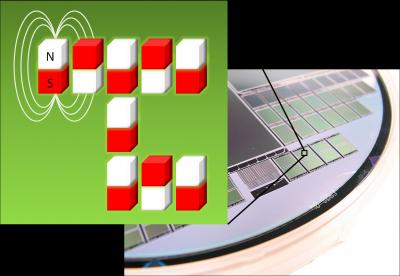A team of electrical engineers from the University of California, Berkeley, analyzed that in future, computers may depend on magnetic microprocessors, which use the minimal amount of energy permitted by the laws of physics.
Currently used silicon-based microprocessors are powered by moving electrons or electric currents that produce large amounts of waste heat. However, microprocessors having bar magnets of nanometer dimensions used for logic, memory and switching operations would theoretically not require moving electrons.
 Nanomagnetic computers use tiny bar magnets to store and process information
Nanomagnetic computers use tiny bar magnets to store and process information
At ambient temperatures, the dissipation of energy by these chips would be only 18 meV for each operation, which is the minimum permissible limit called the Landauer limit according to the second law of thermodynamics.
Graduate student in the Department of Electrical Engineering and Computer Sciences, UC Berkeley, Brian Lambson, has joined hands with UC Berkeley professor of electrical engineering and computer sciences, Jeffrey Bokor, to build magnetic computers.
In present-day microprocessors and transistors, the Landauer limit is very low when compared to other energy losses that produce heat, mainly due to the electrical resistance caused by electrons in motion. Bokor is planning to design computers that do not depend on moving electrons within the Landauer limit. Lambson will check the energy efficiency of a simple magnetic memory and magnetic logic circuit both theoretically and experimentally.
The nanomagnets used by researchers to fabricate logic devices and magnetic memory have a width of about 100 nm and a length of about 200 nm. When multiple nanomagnets are brought in close contact, their poles interact with each other to reveal transistor characteristics, enabling simple logic operations.
Lambson demonstrated using computer simulations and calculations that a simple memory operation associated by energy dissipation close to the Landauer limit can be performed. Researchers at the University of Notre Dame performed a logical operation successfully using magnetic nanoparticles back in 2006. For this purpose, they developed a three-input majority logic gate with 16 coupled nanomagnets. As the Landauer limit was directly proportional to temperature, the temperature of circuits was considerably low ensuring high efficiencies.